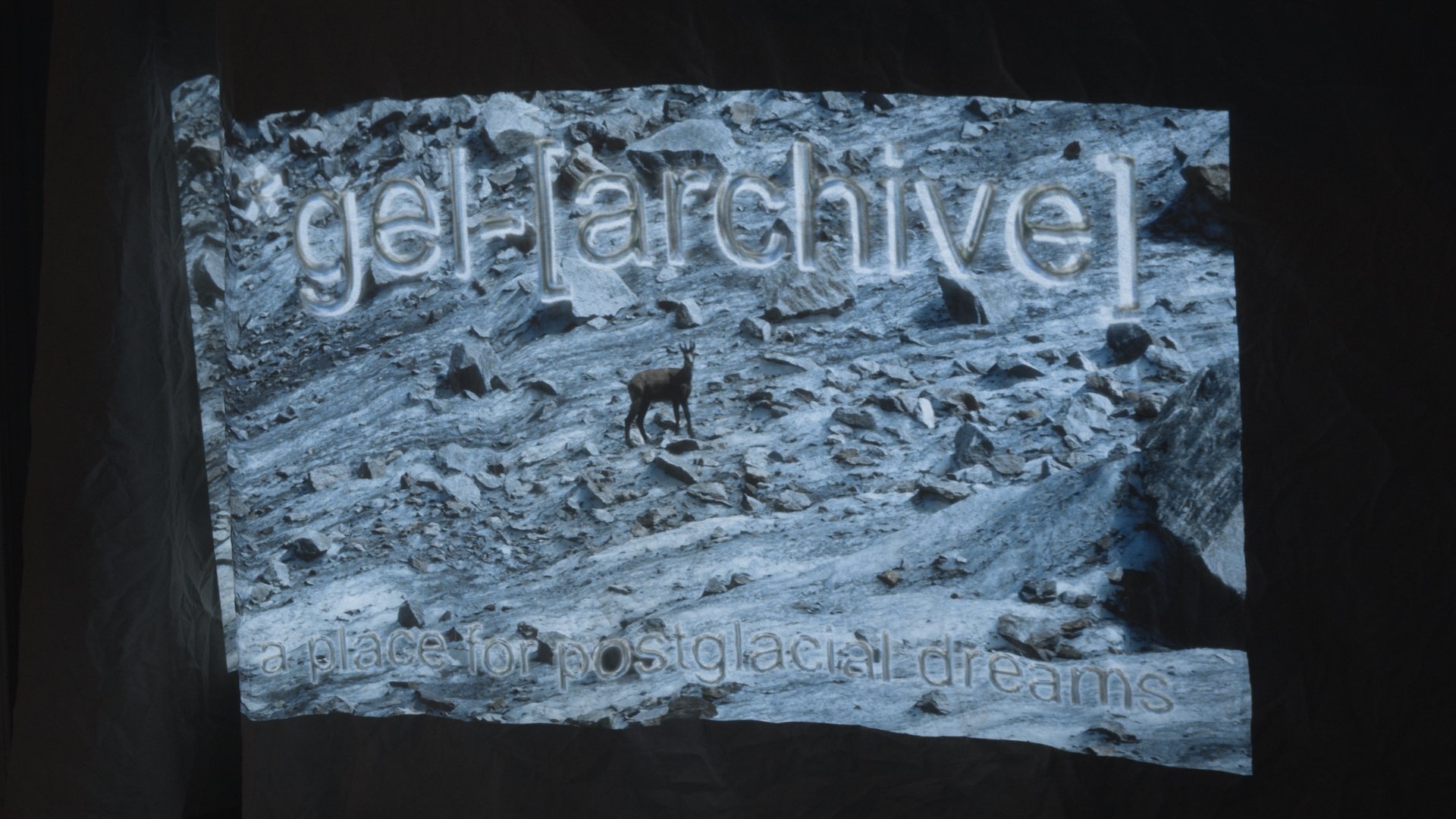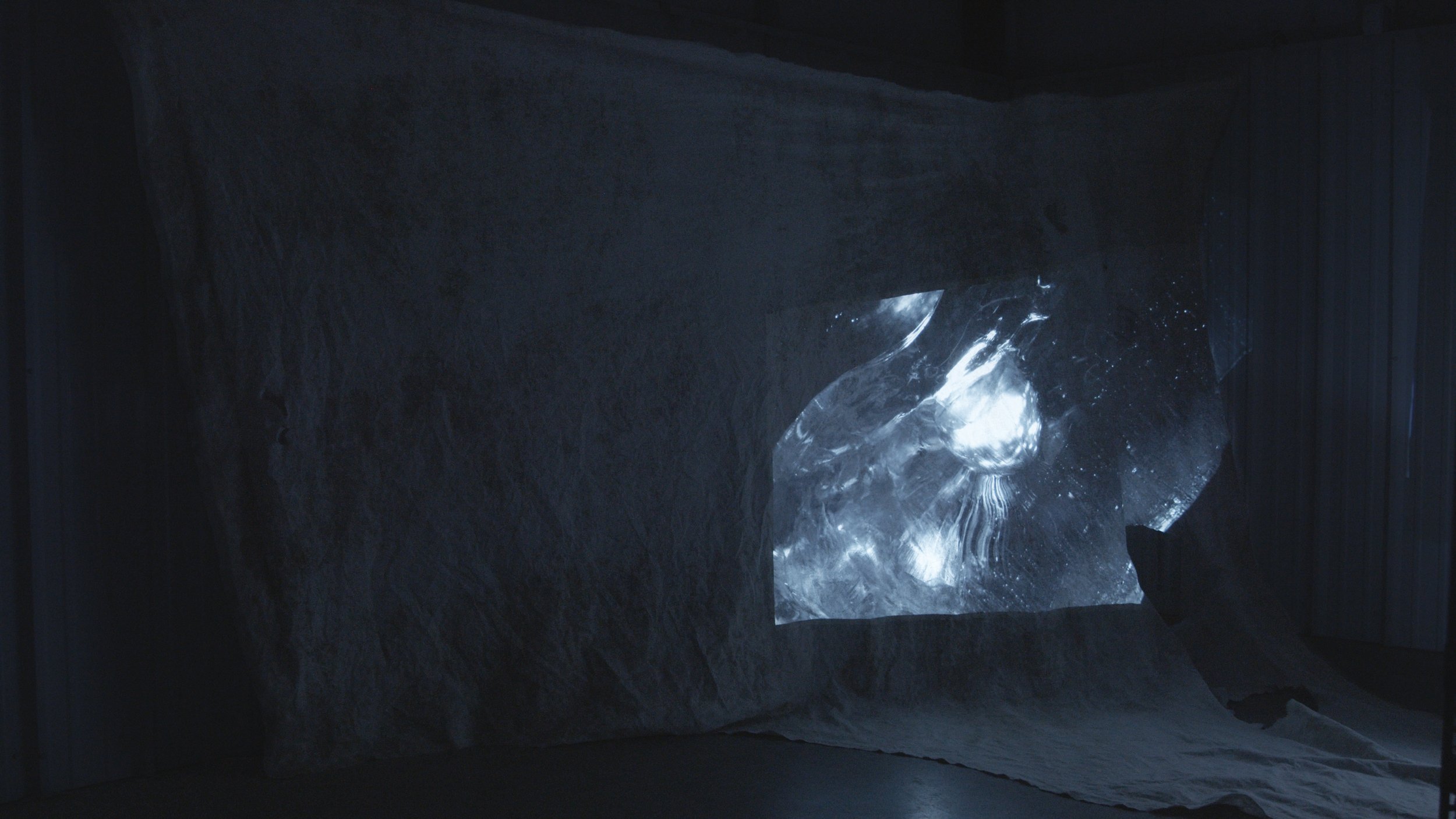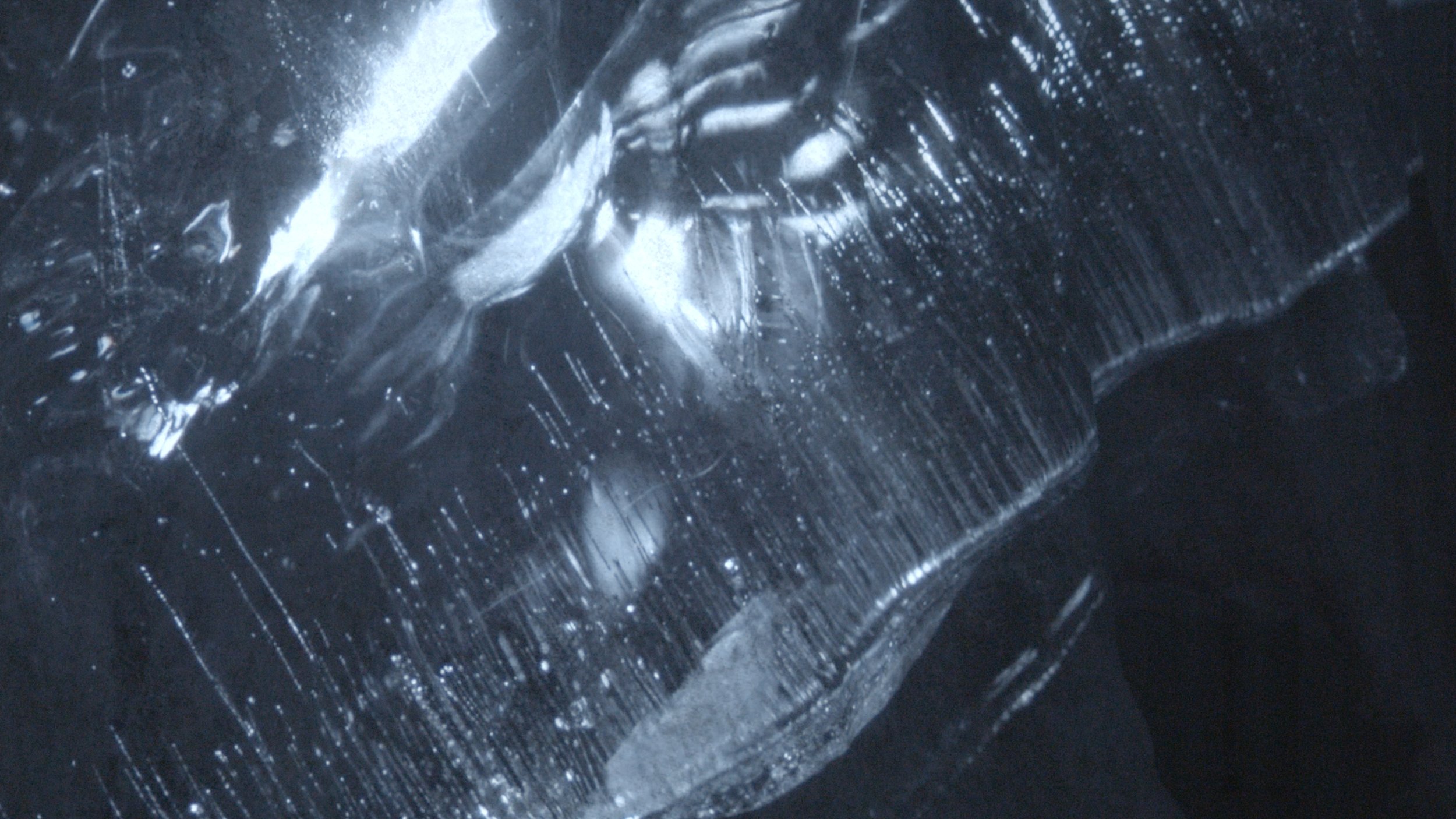In glaciological research, ice cores are drilled in Antartica and stored in order to extract knowledge about past climates from them. In the Alps glaciers have increasingly been protected by polyester geotextiles so they can continue to function as sublime tourist attractions. Inherent in both practices are hopes for technocractic solutions to conflicts of the climate crisis. «*gel-[archive]», a growing and changing archive itself with each installation, investigates the duality of glaciers as natural archives and the archiving of glaciers and asks: Will glacial ecologies in the future exist only fragmented as ice samples in laboratories, mediated through screens or in our imaginaries? And have images of melting glaciers already rendered useless? Investigating these questions, the installation itself remains a precarious commentator, creating different feedback loops in itself.
multi-media installation, 2020–2025
In the technoid, pseudo-scientific installation, an archiving process is imagined through investigation of different media and materialities. However, glaciers, physical ice, polyester geotextiles and the aquarium have long become artefacts and objects of analyses for art works and institutional critiques. Have they already rendered useless in their effect or are caught in the sublime imaginaries attached to them?
‹Archive› in «*gel-[archive]» is to be understood ambiguously here: On the one hand, there are the glaciers as natural archives, which have a preserving effect through their ice masses over thousands of years. And on the other hand, there are human-made archives, often with violent histories, in which artefacts are appropriated and preserved transgenerationally. Archives and archiving as a cultural technique are subject to an anthropological desire for preservation.
The film material of «*gel- [archive]» has been recorded over several years at various locations (Southern Ice Field/Antartica, Switzerland, Iceland) and has itself taken the form of a growing, more resources consuming archive. The material was filmed mostly in the extreme tele and extreme wide angle range to provoke reflection on different media artefacts.
Sounds were recorded by artist Gerome Gadient on a joint expedition to Morteratsch Glacier in Switzerland (2020). He used directional, contact and underwater microphones to later create a soundscape that oscillates between dualities of the archive here (natural/synthesized).
-
Eva Horn (2017): The Aesthetics of Heat. For a Cultural History of Climate Change. Metaphora. Journal for Literature Theory and Media (2), S. 1–14.
Matthias Huss et al. (2021): Quantifying the overall effect of artificial glacier melt reduction in Switzerland, 2005–2019. Cold Regions Science and Technology 184/103237.
Luke Skrebowski (2008): All Systems Go: Recovering Hans Haacke’s Systems Art. Grey Room (30), S. 54–83.
Stuart Hall (2001): Constituting an Archive, in: Third Text 15/54, (März 2001), S. 89– 92.
Timothy Morton (2013): Hyperobjects: Philosophy and Ecology After the End of the World.








